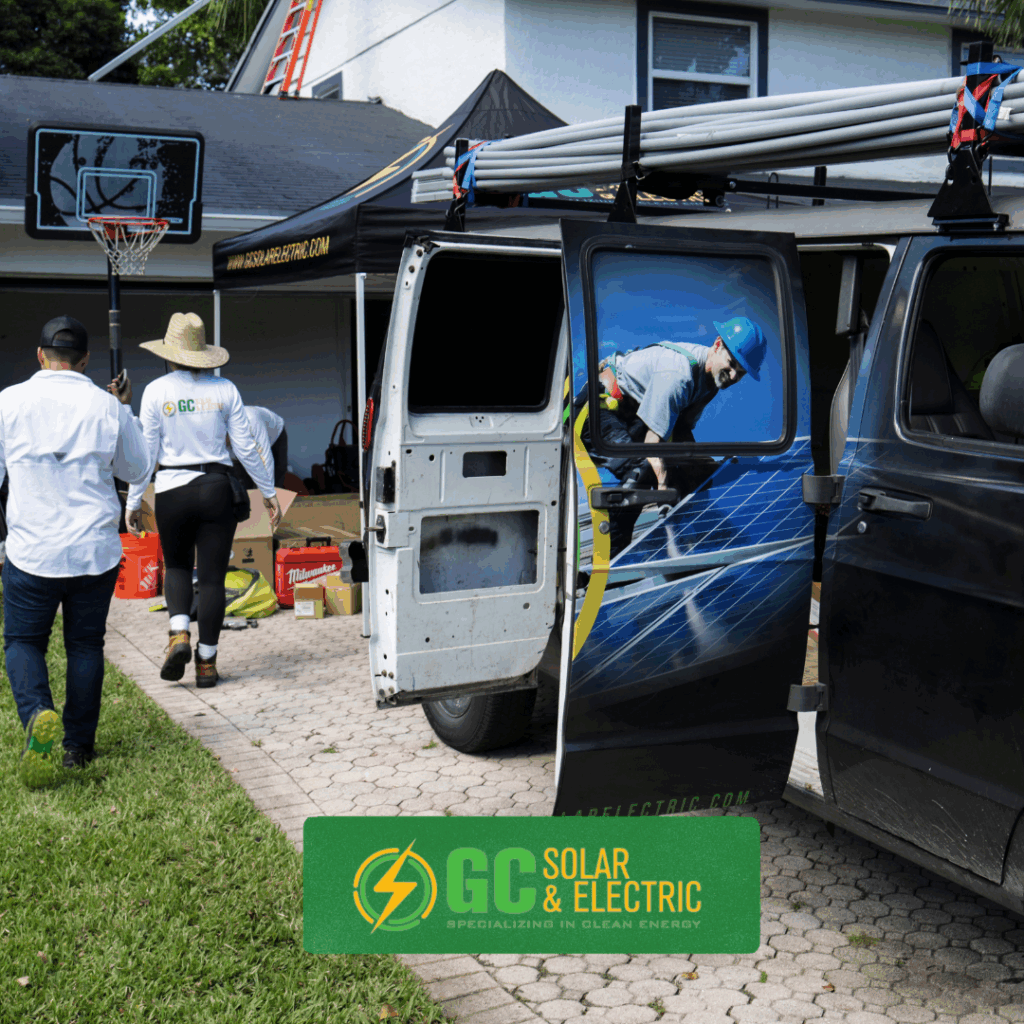Switching to solar power in Miami-Dade County is a bright idea for homeowners looking to save money and embrace clean energy. With Miami-Dade solar energy systems for homes, you can harness the region’s abundant sunshine to lower your electric bills and boost your home’s value. This article dives deep into everything you need to know about installing solar systems in Miami-Dade, from costs and benefits to financing and local incentives. Written in a friendly yet professional tone, we’ll keep things clear, engaging, and easy to understand for all readers. Let’s explore how solar can light up your home in Miami-Dade!
Why Choose Solar in Miami-Dade?
Tapping into the Sunshine State’s potential
Miami-Dade County, with nearly 250 sunny days a year, is a perfect spot for solar energy. Miami-Dade solar energy systems for homes let you turn that sunshine into savings. Electricity and transportation account for about 90% of greenhouse gas emissions in the county, so going solar also helps the environment. By generating your own power, you can cut your electric bills by 40-60%, protect against rising utility rates, and even prepare for hurricanes with reliable energy. Homes with solar panels can also sell for up to 15% more, making it a smart investment. Plus, with programs like solar co-ops and federal tax credits, going solar is more affordable than ever.
Solar systems are especially valuable in Miami-Dade, where hurricanes can cause power outages. Pairing panels with battery storage, like the Tesla Powerwall, ensures your home stays powered during storms. With Florida ranking fourth in the nation for solar output, producing enough to power over 687,000 homes, Miami-Dade is a hotspot for clean energy. Ready to make the switch? Solar is a win for your wallet and the planet.
Call to Action: Want to see how solar can work for your home? Request a free consultation to explore your options today!
What’s in a Miami-Dade Solar System?
Understanding the components
A solar energy system for your Miami-Dade home includes several key parts that work together to generate power:
-
Solar Panels: These capture sunlight and convert it into electricity. Brands like Panasonic or QCells are popular, often with 25-30 year warranties.
-
Inverters: These turn the panels’ direct current (DC) into usable alternating current (AC). Options include string inverters, microinverters, or hybrid models.
-
Battery Storage: Systems like the Tesla Powerwall store extra energy for use during outages or at night.
-
Mounting and Wiring: Hardware secures panels to your roof, and wiring connects everything to your home’s electrical system.
-
Monitoring Systems: These track your system’s performance, showing real-time energy production.
Here’s a quick breakdown:
|
Component |
Purpose |
Key Details |
|---|---|---|
|
Solar Panels |
Convert sunlight to electricity |
400-500W, 25-30 yr warranty |
|
Inverters |
Convert DC to AC |
String, micro, or hybrid |
|
Battery Storage |
Store energy for later use |
Tesla Powerwall, 10-15 yr warranty |
|
Mounting/Wiring |
Secure panels, connect system |
Must meet Miami-Dade wind codes |
|
Monitoring |
Track energy production |
Real-time data via app or portal |
A typical Miami-Dade home needs a 15.57 kW system to cover electric bills, costing around $37,023 before incentives. Your installer will customize the system based on your roof and energy needs.
Costs of Solar Systems in Miami-Dade
Breaking down the price tag
The cost of Miami-Dade solar energy systems for homes varies based on system size, equipment, and installation. On average, a 5 kW system costs about $11,148 before incentives, while a larger 15.57 kW system runs around $37,023. Factors affecting cost include:
-
System Size: Larger systems cost more but generate more power. Most homes need 6-11 kW.
-
Equipment Quality: Premium panels (e.g., SunPower) cost more but offer better efficiency and warranties.
-
Installation Complexity: Roofs with steep slopes or shading may increase labor costs.
-
Permits and Fees: Miami-Dade has an expedited solar permitting process, which lowers costs.
After incentives, like the 30% federal tax credit (available until 2026), costs drop significantly—sometimes by 50%. For example, a $37,023 system could cost $25,916 after the credit. Most systems pay for themselves in 6-8 years through energy savings.
Call to Action: Curious about costs? Get a free quote to see how affordable solar can be for your Miami-Dade home!
Benefits of Solar in Miami-Dade
Savings, resilience, and more
Installing a solar system in Miami-Dade offers big perks:
-
Lower Bills: Save up to $70,362 over 25 years on electricity costs, with average savings of $66,759 for a 15.57 kW system.
-
Hurricane Resilience: Battery storage keeps your home powered during outages, critical in hurricane-prone Miami-Dade.
-
Home Value Boost: Solar homes can sell for 4-15% more, appealing to buyers who want energy savings.
-
Eco-Friendly: Solar cuts your carbon footprint, reducing emissions equivalent to removing 196 gas-powered cars annually.
-
Incentives: The federal tax credit, local rebates, and net metering (where you sell excess power to the grid) make solar affordable.
Miami-Dade’s sunny climate and supportive policies, like the Property Assessed Clean Energy (PACE) program, make solar a no-brainer.
Financing Options for Solar Systems
Making solar affordable
Paying for Miami-Dade solar energy systems for homes is easier with flexible financing:
-
Cash Purchase: Pay upfront for maximum savings. A 5 kW system costs ~$11,148, with a 6-8 year payback period.
-
Solar Loans: $0-down loans with 2-7 year terms and 6-36% interest rates. You own the system and keep incentives.
-
Leases/PPAs: Pay a monthly fee to use the system without owning it. No upfront costs, but savings and incentives are limited.
-
PACE Financing: Repay through property tax assessments, ideal for energy upgrades like solar or hurricane windows.
Here’s a comparison:
|
Option |
Upfront Cost |
Ownership |
Savings Potential |
Best For |
|---|---|---|---|---|
|
Cash Purchase |
High |
Yes |
High |
Long-term savings |
|
Solar Loan |
Low-Med |
Yes |
Medium-High |
No upfront funds |
|
Lease/PPA |
None |
No |
Low-Medium |
Low maintenance |
|
PACE Financing |
None |
Yes |
Medium |
Tax-based repayment |
Check with installers for PACE or loan options, and confirm eligibility for the 30% federal tax credit.
Call to Action: Explore financing with a trusted solar provider to find the perfect plan for your budget!
Navigating Miami-Dade Solar Permits
Simplifying the process
Miami-Dade County makes permitting easy with an expedited process for solar systems. Here’s what you need:
-
Building Permit Application: Signed by the homeowner and contractor.
-
Electrical Fee Sheet: Includes Category 34 for solar photovoltaic systems.
-
Electronic Plans: Submit PDF drawings per county guidelines, showing panel placement and roof details.
-
Pre-Approved Flashing Detail: Using Miami-Dade’s standard reduces fees.
Permits ensure your system meets strict wind codes (up to 150 mph) for hurricane safety. Projects using the county’s pre-approved designs save time and money. After installation, a final inspection confirms compliance. You can check permit status online or call 786-315-2100 for help.
Choosing a Miami-Dade Solar Installer
Finding the right pro
Picking a trusted installer is key to a successful solar project. Miami-Dade has 11 solar companies on platforms like EnergySage, including top-rated ones like IntegrateSun and Palmetto Solar. Here’s how to choose:
-
Check Certifications: Look for NABCEP-certified installers for quality and safety.
-
Read Reviews: Platforms like SolarReviews or EnergySage show customer feedback.
-
Compare Quotes: Get at least three quotes to compare price, equipment, and warranties. Local installers often beat national ones by 10% on cost.
-
Verify Licensing: Call 786-315-2880 to confirm the contractor’s license and insurance.
Solar co-ops, like those run by Solar United Neighbors, offer group discounts and vetted installers. For example, the 2024 Miami-Dade Solar Co-op selected Cutler Bay Solar Solutions for 35 members.
Call to Action: Join a solar co-op or request quotes from top-rated installers to get the best deal!
Local Incentives and Programs
Saving more with Miami-Dade support
Miami-Dade offers unique programs to make solar affordable:
-
Federal Tax Credit: 30% off system costs until 2026.
-
PACE Program: Finance solar through property taxes, with no upfront cost.
-
Solar Co-ops: Group buying lowers costs. The 2023 co-op selected Sunbility, LLC for 50 homes.
-
EECBG Grants: In 2024, Miami-Dade received $1.13M to install free 5 kW systems for 44 low-income homes, saving $840,000 over their lifespan.
-
Net Metering: Sell excess power to utilities like FPL for bill credits.
These incentives, combined with Florida’s high solar output, make Miami-Dade a top spot for solar savings.
FAQ: Your Solar Questions Answered
What’s in a Miami-Dade solar system?
A Miami-Dade solar energy system for homes includes solar panels, inverters, battery storage, mounting hardware, and monitoring tools. Panels, like those from Panasonic, capture sunlight and come with 25-30 year warranties. Inverters convert energy for home use, with options like microinverters for efficiency. Battery storage, such as the Tesla Powerwall, stores excess energy for outages, crucial in hurricane-prone Miami-Dade. Mounting and wiring secure the system to your roof, built to withstand 150 mph winds per local codes. Monitoring apps let you track energy production in real-time. A typical system is 15.57 kW, costing around $37,023 before incentives, and covers most home energy needs. Installers customize based on your roof size, shading, and energy use. Check for NABCEP-certified installers and get multiple quotes to ensure quality. Programs like PACE or solar co-ops can lower costs, and the 30% federal tax credit (until 2026) makes it more affordable.
How much do solar systems cost in Miami-Dade?
The cost of Miami-Dade solar energy systems for homes averages $37,023 for a 15.57 kW system, or about $2.38/W before incentives. Smaller 5 kW systems cost around $11,148. Costs depend on system size, panel quality (e.g., SunPower vs. QCells), and roof complexity. Miami-Dade’s expedited permitting reduces fees, and the 30% federal tax credit (until 2026) can cut costs by up to 50%. For example, a $37,023 system drops to $25,916 after the credit. PACE financing lets you pay through property taxes, while solar co-ops offer group discounts. Systems typically pay for themselves in 6-8 years, with savings of $66,759-$70,362 over 25 years. Compare at least three quotes from certified installers to find the best price. Local installers often charge 10% less than national ones. Check reviews on EnergySage or SolarReviews to ensure quality.
Are there incentives for Miami-Dade solar?
Yes, Miami-Dade solar energy systems for homes come with great incentives. The federal tax credit offers 30% off installation costs until 2026, reducing a $37,023 system to about $25,916. The PACE program lets you finance solar through property taxes with no upfront cost. Solar co-ops, like the 2024 Miami-Dade co-op, provide group discounts, with 35 homes selecting Cutler Bay Solar Solutions. In 2024, a $1.13M EECBG grant funded free 5 kW systems for 44 low-income homes, saving $840,000 over their lifespan. Net metering lets you sell excess power to FPL for bill credits. Florida’s abundant sunshine and high solar output (5,749 MW statewide) make these incentives even more valuable. Always verify eligibility with your installer and check dsireusa.org for details. Joining a co-op or using platforms like EnergySage can maximize savings.
How long does installation take?
Installing Miami-Dade solar energy systems for homes typically takes 1-3 days once equipment arrives. The process starts with a site visit (virtual or in-person) to measure your roof and assess energy needs, followed by permit submission through Miami-Dade’s expedited process. After approval, installation involves mounting panels, wiring, and connecting inverters, usually completed by 2-3 NABCEP-certified technicians. A final inspection ensures compliance with local wind codes. The entire timeline, from quote to power-on, takes 4-8 weeks, depending on permitting and equipment delivery. Using pre-approved county designs speeds things up and cuts costs. For example, the 2023 Miami-Dade Solar Co-op streamlined installations for 50 homes. Check permit status online or call 786-315-2100. To avoid delays, choose a reputable installer with strong reviews and confirm they handle all paperwork.



